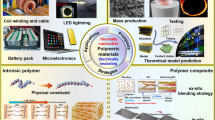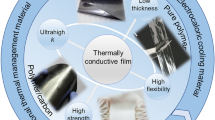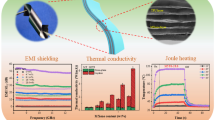Abstract
Stress is a problem for thin film Multichip Modules (MCM) fabrication and reliability. Stress can cause adhesion failure, wire cracking and fracture of the polymer. Parylene can be deposited in a low compressive stress state, and here we explore its temperature-stress behavior. The stress generated by thermal coefficient of expansion (TCE) mis-match between thick parylene-n (PA-n) films (4-7 μm)and Si substrates has been studied as a function temperature. Measurements of stress were made on as-deposited films; after thermal annealing and also in-situ. The as-deposited films are under compressive stress of 20 MPa. As the films are annealed, the stress decreases and then becomes tensile, peaking at about 53 MPa. It was observed that stress was reduced in PA-n films during the crystal phase transformations at around 200 and 270°C. The stress has been compared to reported data from other sources and found to agree. Stress in PA-c (chlorinated), and co-polymerized PA-n ande (ethyl) films, and a fluorinated parylene (PA-f) are also evaluated. The effective glass transition temperatures and the linear coefficient of expansion have also been estimated.
Similar content being viewed by others
References
W. H. Steinbaugh, A. Harrus and W. R. Knolle, IEEE Trans. Electron Devices36, 542 (1989).
Che-Yu Li, R. D. Black and W. R. LaFontaine, Appl. Phys. Lett.53, 31 (1988).
M. S. Hu, Mat. Res. Soc. Symp. Proc.167, 153 (1990).
D. A. Jeannotte, L. S. Goldmann and R. J. Howard, Package Reliability, Ch. 5, Microelectronic Packaging Handbook, Van Norstrand Reinhold, NY 1989.
N. Majid, S. Dabral and J. F. McDonald, J. Electron. Mater.18, 301 (1989).
W. F. Beach, C. Lee, D. R. Basset, T. M. Austin and R. Oison, Encycl. Pol. Sci. Engr., Vol. 17, 2nd Ed., John Wiley & Sons Inc., 1989, pp. 990.
W. F. Beach and T. M. Austin, 2nd Intl. SAMPE Elect. Conf., June 1988, pp. 25.
B. J. Bachmann, First Int. SAMPE Conf., June 23-25 1987.
A. M. Pelella, MS Thesis, 1989, Rensselaer Polytechnic Institute, Troy, NY.
D. Soane and Z. Martynenko, Polymers in Microelectronics, Ch. 2, Elsevier, 1989, pp. 15.
W. D. Niegisch, J. Appl. Phys.37, 4041 (1966).
C.-K. Hu, H. M. Tong, C. Feger and P. S. Ho, IEEE VMIC 1985, pp. 280–284.
C. E. White, W. E. Loeb, Status report, “Thermal endurance of Parylenes III, Characterization of Parylene AF 4”, 819-24-3-00067, Union Carbide Corp., Polymers R & D, New Jersey, 1966.
P. S. Ho, “Chemical Bonding and Stress Relaxation at Metal-Polymer Interfaces”, Principles of Electronic Packaging, Ch. 27, McGraw Hill, 1989, pp. 809.
G.-R. Yang, S. Dabral, L. You, H. Bakhru, J. F. McDonald and T. M. Lu, J. Electron. Mater.20, 571 (1991).
Author information
Authors and Affiliations
Rights and permissions
About this article
Cite this article
Dabral, S., Van Etten, J., Zhang, X. et al. Stress in thermally annealed parylene films. J. Electron. Mater. 21, 989–994 (1992). https://doi.org/10.1007/BF02684208
Received:
Revised:
Issue Date:
DOI: https://doi.org/10.1007/BF02684208




